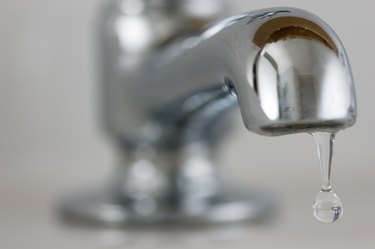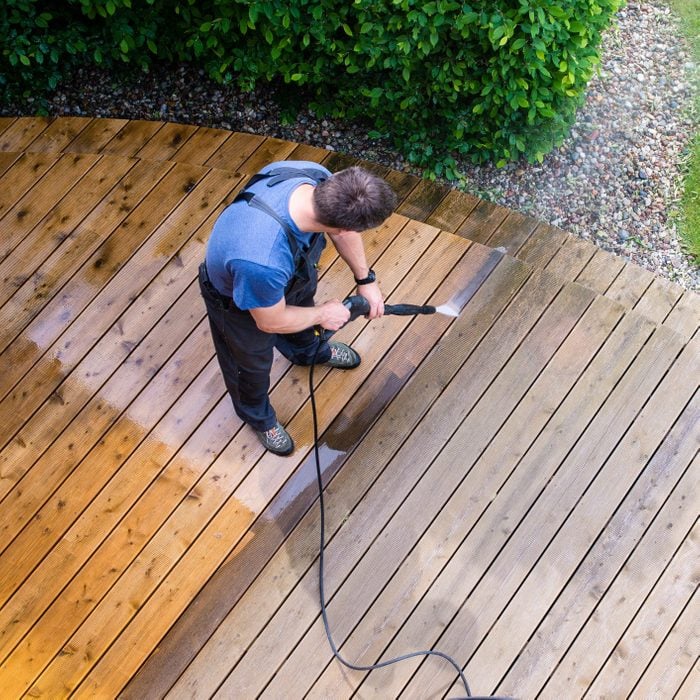Simple Ways for Dealing with Low Water Pressure in Your Home
Simple Ways for Dealing with Low Water Pressure in Your Home
Blog Article
Everybody is bound to have their private assumption in relation to Dealing with Low Water Pressure in Your Home.

Low water pressure in your house can be a discouraging issue, influencing whatever from bathing to washing meals. If you're experiencing weak water flow, there are a number of feasible reasons and options to check out. In this overview, we'll talk about usual factors for low water stress and sensible steps to resolve the problem efficiently.
Intro to Low Water Stress
Low water pressure occurs when the circulation of water from your faucets, showers, and other fixtures is weak than typical. This can make daily jobs much more tough and much less effective. Recognizing the root causes of low tide stress is important to locating the appropriate solution.
Typical Root Causes Of Low Water Stress
Pipe Obstructions
In time, pipelines can end up being obstructed with natural resource, sediment, or particles, restricting the circulation of water. This is a typical issue in older homes with galvanized steel pipelines.
Deterioration
Rust within pipes can cause leaks and lowered water stress. Corrosion accumulation can restrict water circulation, especially in aging plumbing systems.
Faulty Pressure Regulators
Pressure regulators are responsible for maintaining constant water pressure in your house. If they malfunction, it can cause low tide pressure or unequal flow throughout your home.
Local Water Issues
Sometimes, the problem exists outside your home. Local supply of water issues, such as main line leakages or upkeep job, can momentarily lower water stress in your location.
Exactly How to Diagnose Low Water Pressure
Inspecting Taps and Components
Begin by examining the water stress at various taps and components throughout your home. If the issue is separated to specific locations, it may suggest local issues.
Inspecting Pipelines
Examine noticeable pipelines for signs of leaks, deterioration, or blockages. Pay attention to any kind of unusual audios, such as banging or rattling pipes, which might show issues within the plumbing system.
Consulting with a Plumber
If you're unable to identify the root cause of low tide pressure, consider hiring a professional plumber to conduct a complete examination. They can determine underlying problems and suggest suitable solutions.
DIY Solutions to Repair Low Tide Pressure
Cleaning Aerators and Showerheads
Natural resources can accumulate in aerators and showerheads, minimizing water circulation. Remove and clean these elements routinely to improve water stress.
Flushing Water Heater
Sediment buildup in the hot water heater can limit circulation and decrease efficiency. Flushing the tank periodically helps eliminate sediment and maintain optimal performance.
Examining Pressure Regulator
Make sure that the stress regulatory authority is working appropriately. Adjusting or replacing the regulatory authority can help restore correct water pressure throughout your home.
Cleaning Clogs in Pipeline
For minor blockages, try utilizing a plumbing serpent or chemical drainpipe cleaner to clear obstructions in pipes. Be cautious when making use of chemicals and comply with security standards.
When to Call a Specialist Plumber
If DIY efforts fail to resolve the issue or if you presume significant plumbing problems, it's ideal to look for help from a licensed plumber. They have the knowledge and tools to deal with intricate problems safely and effectively.
Preventive Measures to Keep Water Pressure
Regular Maintenance
Schedule regular maintenance for your plumbing system to prevent issues such as deterioration, leakages, and blockages. Dealing with minor troubles early can aid stay clear of more significant repairs later.
Mounting a Pressure Booster
Think about mounting a pressure booster pump to improve water stress in areas with consistently low flow. This can be specifically helpful for multi-story homes or homes with high-demand components.
Tracking Water Use
Be mindful of water usage behaviors and prevent ill-using the plumbing system. Basic changes, such as astonishing showers and laundry tons, can aid maintain ample water stress.
Conclusion
Taking care of low tide pressure can be frustrating, yet determining the underlying reasons and applying appropriate options can restore optimal flow throughout your home. Whether it's cleansing aerators, checking pipes, or seeking advice from a plumber, taking aggressive steps can ensure a stable supply of water for your everyday needs.
HOW TO FIX LOW WATER PRESSURE IN YOUR HOUSE (EXPERT GUIDE)
The morning shower lacking any real pressure? Bathtub taking hours to fill? Or maybe you’re dissatisfied with the inadequate performance from your combi boiler?
Then you, like millions of others across the UK, might be experiencing low water pressure.
Fortunately, the good news is that you don’t have to continue living this way. The cause of low water pressure in the home is often quite simple, and you may not even require a plumber to fix the problem.
What causes low water pressure in the house?
If you are experiencing issues with water pressure throughout your home, then you may have one of the problems outlined below.
Most of these problems can be fixed quite easily, but for others, you may need to contact a plumber.
Obstructed Shutoff Valve
If you’ve just bought a new home or recently had building work conducted on your property, there is a chance that your water valves were not fully opened.
If the water valve is partially closed, then you may be restricting the amount of water entering your home. To fix this, simply ensure the valve is fully open.
If the valve appears fully open but you are still encountering reduced water pressure, then the valve may be broken. If this is the case, do not under any circumstances try to fix it without proper training.
Often found under your kitchen sink, a water valve will usually look like a bright yellow handle.
Again, if you believe the water valve is broken, contact a plumber immediately.
Leaks in Your Water Pipes
Leaks are the worst-case scenario when it comes to low water pressure.
If the water pipes are damaged, then this will cause low water pressure, as not all the water will make it to your taps.
After you’ve checked to see if the valve is fully open, you can conduct a leak check of your home. Now, this may seem scary, but it is actually quite simple.
Clogged Water Pipes
Clogged water pipes are one of the most common causes of low water pressure.
These clogs usually build-up when your home is supplied water via iron pipes. Iron is particularly vulnerable to rusting which can then break off and cause an obstruction within your system. You also face the problem of things like dirt, gravel or sand entering creating mineral deposits which further block water flowing from the mains water supply.
Unfortunately, if you suspect that clogged pipes may be restricting your water supply, then you will need to contact a plumber.
In this situation, you will either need to have your pipes removed and cleaned or in more severe cases, you could require a new set of water pipes.
Designer Taps
Designer taps look fantastic, but are they built to be efficient in your plumbing system? Modern taps are built for modern homes and they often have lower flow rates that are specifically designed for use within high-pressure systems.
Install a Water Pressure Booster Pump
If the issue is simply that the mains water pressure supply is too low, the simplest fix is to invest in a booster pump. Found in homes of all shapes and sizes, booster pumps are a relatively cheap option to add extra pressure to your home.
Designed to increase water pressure by passing water into the pump from your mains supply and then ejecting it into your home water system at a higher pressure, a booster pump is a truly simple and effective solution to increasing water pressure.
https://www.anchorpumps.com/blog/the-plumbers-guide-to-fixing-low-water-pressure/

HOW TO FIX LOW WATER PRESSURE IN YOUR HOUSE (EXPERT GUIDE)
The morning shower lacking any real pressure? Bathtub taking hours to fill? Or maybe you’re dissatisfied with the inadequate performance from your combi boiler?
Then you, like millions of others across the UK, might be experiencing low water pressure.
Fortunately, the good news is that you don’t have to continue living this way. The cause of low water pressure in the home is often quite simple, and you may not even require a plumber to fix the problem.
What causes low water pressure in the house?
If you are experiencing issues with water pressure throughout your home, then you may have one of the problems outlined below.
Most of these problems can be fixed quite easily, but for others, you may need to contact a plumber.
Obstructed Shutoff Valve
If you’ve just bought a new home or recently had building work conducted on your property, there is a chance that your water valves were not fully opened.
If the water valve is partially closed, then you may be restricting the amount of water entering your home. To fix this, simply ensure the valve is fully open.
If the valve appears fully open but you are still encountering reduced water pressure, then the valve may be broken. If this is the case, do not under any circumstances try to fix it without proper training.
Often found under your kitchen sink, a water valve will usually look like a bright yellow handle.
Again, if you believe the water valve is broken, contact a plumber immediately.
Leaks in Your Water Pipes
Leaks are the worst-case scenario when it comes to low water pressure.
If the water pipes are damaged, then this will cause low water pressure, as not all the water will make it to your taps.
After you’ve checked to see if the valve is fully open, you can conduct a leak check of your home. Now, this may seem scary, but it is actually quite simple.
Clogged Water Pipes
Clogged water pipes are one of the most common causes of low water pressure.
These clogs usually build-up when your home is supplied water via iron pipes. Iron is particularly vulnerable to rusting which can then break off and cause an obstruction within your system. You also face the problem of things like dirt, gravel or sand entering creating mineral deposits which further block water flowing from the mains water supply.
Unfortunately, if you suspect that clogged pipes may be restricting your water supply, then you will need to contact a plumber.
In this situation, you will either need to have your pipes removed and cleaned or in more severe cases, you could require a new set of water pipes.
Designer Taps
Designer taps look fantastic, but are they built to be efficient in your plumbing system? Modern taps are built for modern homes and they often have lower flow rates that are specifically designed for use within high-pressure systems.
Install a Water Pressure Booster Pump
If the issue is simply that the mains water pressure supply is too low, the simplest fix is to invest in a booster pump. Found in homes of all shapes and sizes, booster pumps are a relatively cheap option to add extra pressure to your home.
Designed to increase water pressure by passing water into the pump from your mains supply and then ejecting it into your home water system at a higher pressure, a booster pump is a truly simple and effective solution to increasing water pressure.
https://www.anchorpumps.com/blog/the-plumbers-guide-to-fixing-low-water-pressure/
Do you appreciate reading up on 9 Reasons for Low Water Pressure in Your House? Give a remark down below. We'd be delighted to find out your reactions about this blog posting. We hope that you visit us again soon. Liked our piece? Please quickly share it. Help another person find it. I enjoy your readership.
Click Here Report this page